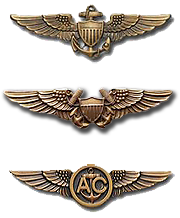The Amazing FB-218 Navigation Device - 1970

Submitted by: CDR Bill Hobgood (a flight student in 1970)
Back in the 60’s and 70’s, student Naval Flight Officers heading to VP squadrons finished up their final segment of training at Advanced Navigation School at NAS Corpus Christi, Texas. Once they successfully graduated they received their wings; but before reporting to their squadron, they still had six months of training at FAETULANT/PAC (classroom ASW training) and then the P-3 RAG - VP-30 or VP-31. In those days, because some VP squadrons had navigator duties still assigned to the third pilot, student pilots also went through a similar, though somewhat shortened, navigation course. .png)
But back to Corpus Christi. The advanced nav training squadron was VT-29 and I reported-in there in late June 1970. Advanced Nav training was mostly concentrated on celestial navigation but we also mastered LORAN, Polar Grid Nav, Pressure Pattern Nav, DR and another type of strange navigation I cannot remember. This was well before Inertial, Omega and GPS. In fact, GPS has now pretty much made all other overwater navigation methods obsolete. But I digress.
The Summer of 1970 the Navy was “RIFing” (RIF = Reduction In Force) many pilot and NFO students due to the winding down of the Vietnam war. Some students, with just weeks left before winging, were given their “pink slips” and sent home with obligated service fulfilled. Accordingly, the classes were small. The class of student NFOs I was in, was merely five students and all but one of us lived in the BOQ. As a result, we spent a lot of time together and became quite close. Dick “Mac” McIntosh and I became really good friends and had BOQ rooms next to each other. .jpg)
One day I entered Mac’s room and he was playing with one of those paddles with a ping-pong size rubber ball attached to the paddle with a stretchy rubber string. See the picture to the left. It was called a “Fli-Back.” Bet we have all seen these toys and know what you do with them. Anyway, Mac was banging that ball back and forth with a big smile on his face. So, I had to try it. We soon were taking turns and counting the number of whacks we could get in a row before a miss…trying to out-score each other. Since this exercise was often done in place of study, it clearly was a work out in dexterous talent that would somehow aid us in navigation accuracy. In fact, since it was now a “training device,” we named it the “FB-218.” I wanted my own and bought one. Soon, anyone walking by one of our rooms would hear the constant WACK-WACK-WACK-WACK-WACK-WACK of two high-speed FB-218s and two 22 year old voices counting: “...237, 238, 239….” Life was good!
Every class seems to have a student who only has one oar in the water. We called ours “Roger Ramjet” after the 1960’s bumbling super-hero. Roger couldn’t get out of his own way. On one of our long range navigation training flights, four of us got together and decided to mess with Roger. It was a daylight nav flight using only sextant-shot sun-lines and the drift meter for navigation aboard a C-117 “Flying Classroom.” The drift meter was an optical device (like a small telescope) used to improve dead reckoning navigation by measuring wind effect on flight. It poked out the bottom of the aircraft and you would look through it at the surface of the ocean to determine (via a rotatable grid) which way and by how much (in degrees) the plane was being pushed by the wind. And by flying a “wind-star,” which is measuring drift on three different headings, you could determine actual wind direction and.jpg) speed.
speed.
Mac McIntosh was the “Lead Navigator” on this flight so his navigation decisions were what the instructor pilots followed, although we all kept separate nav logs. When taking a drift reading, all students would call out their determination of drift in degrees and the lead nav would average them. If drift was more than 2 degrees different from the previous 20 minute reading, you had to “drop a DR” on the chart and this required a full line nav log entry (a pain) and the flying of a wind-star (a bigger pain) to recalculate the wind. If workable and not too obvious, the lead nav would sometimes “bias” the average reading to a drift rate that would NOT require dropping a DR…negating a long nav log entry and flying of a wind star.
So, Mac is Lead Nav and after we all did one of our scheduled drift meter readings, all of us called out our observed drift readings to him...sounded something like this on the ICS: “1 deg right, Mac; OK, Lead, I’ve got 1 deg left; 3 deg right for me, Mac; I agree with Roger at 2 deg right.” Then this discourse followed (we all had planned this in advance except no one told Roger):
Mac: OK….let me compensate those drift calls with the FB-218 reading…standby.
15 seconds later. Mac: Alright…the FB-218 says the actual drift rate is 1 deg left….no need to drop a DR.
Ramjet: Really?? How can that be….my averaging shows it should be more like 2 deg right? Right?
Mac: I’m Lead Nav, Roger and I’ve got the FB-218 and it computed 1 deg left so we have to go with that.
Me: That’s what they said in class, Roger…to go with the FB-218 when the calculated average wake drift was commensurate with the forecast of predicted winds at transit altitude minus the actual forecast sideslip drift angle at sea level.
Jim: That’s what I remember.
Albert: Yeah....me too!
Ramjet: What’s an FB-218?
Mac: Dammit, Roger, you need to pay attention in class….now get ready for that next sun shot.
It was so easy to have fun when young. And, compared to now…time went by so slowly then. I suspect that is because in your early 20’s, you are learning and experiencing new stuff every day. Life was good! And I got orders to VP-45!
In the group picture above, "Mac" Macintosh is standing far right and the author is stooping center. This picture was taken the morning if 18 Nov 1970...the day these students received their wings. The image below is of a VT-29 C-117, as in the story, heading out toward the Gulf of Mexico for an overwater navigation training flight.
.jpg)
About the author of this Sea Story:
CDR Bill Hobgood received his wings in September of 1970. After the events in this story, he was ordered to VP-45 and was a NAV, TACNAV, NAV/COMM,TACCO and Mission Commander in the squadron from 1971 - 1974. After a 22 year active duty career, he retired from the Navy in 1991. He was also WebMaster of the VP-45 Association 2012-2022 as will likely be elected as the first "Newsletter Editor" for the Association beginning in 2022. He currently lives in Lantana, Texas (near Dallas) with his wife, Becky.
Send questions, comments or suggestions regarding this website to: vp45assoc@vp45association.org
Copyright © 2005 PATRON FOUR FIVE ASSOCIATION


